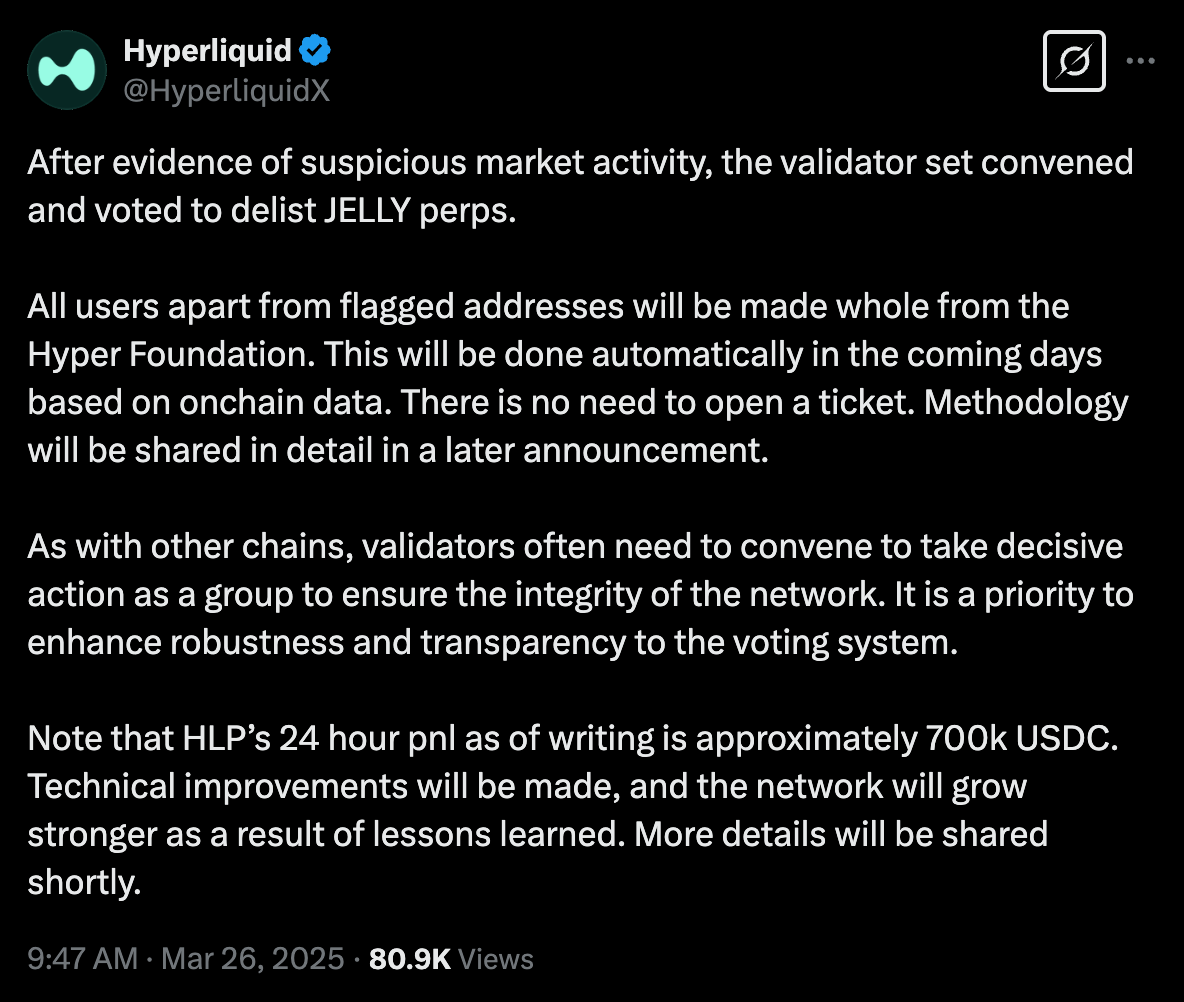Binance Just Declared War on Hyperliquid
$JELLY’s Explosive Squeeze Ignites a Crypto Battleground
Imagine a platform hitting $15 billion in daily trading volume, then losing $10 million in a single day over a tiny token called $JELLY.
Welcome to Hyperliquid’s wild 2025—and the war with Binance is just getting started.
Hyperliquid has been top of mind for several weeks now thanks to mystery whale shorting $300M of Bitcoin and it’s growing ecosystem of apps, along with a rumored new airdrop season just around the corner.
The drama increased when a trader on Hyperliquid opened a massive $6M short position on $JELLY, then intentionally pumping it’s price on on-chain, forcing a self-liquidation that left Hyperliquid’s liquidity pool holding a toxic short position with over -$10M due to the short squeeze.
Hyperliquid’s HLP faced a potential full liquidation if $JELLY reached a $150M market cap.
Many speculated that it was a coordinated attack by centralized exchanges, all but confirmed when Binance listed $JELLY shortly after the drama unfolded. Posts on X suggested Binance’s timing was a deliberate attempt to destabilize Hyperliquid, with one user alleging Binance and OKX were “rushing to bankrupt a competitor.”
Others claimed Hyperliquid manipulated its oracle to force-close trades, undermining its decentralized ethos.
Why would Binance and other centralized exchanges rush to attack Hyperliquid? Well, because they’re eating into CEX's market share.
Here are just a few eye-popping numbers:
$285 Billion in 2024 DEX Futures Volume
$1 Trillion+ in Trading Volume
60.5% Perps Market Share
15-20% of Binance’s Volume
10.17% of CEX Futures Volume Shifted On-Chain
$77 Billion Monthly Volume
$3.37 Billion Open Interest
26.5% Monthly Volume Growth
The fallout has fueled speculation about a broader war between centralized exchanges (CEXs) like Binance and decentralized platforms (DEXs) like Hyperliquid. Binance’s move could be seen as a strategic play to capitalize on Hyperliquid’s vulnerability, while Hyperliquid’s response highlighted the risks of leveraged trading on DEXs.
What do you think? Is this the start of a war between Binance and Hyperliquid, or is it just some rogue attacker trying to exploit a deficiency in the ecosystem?




